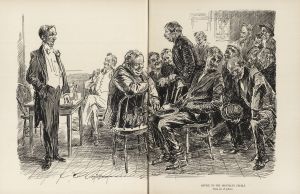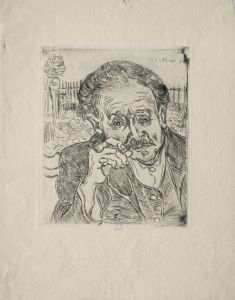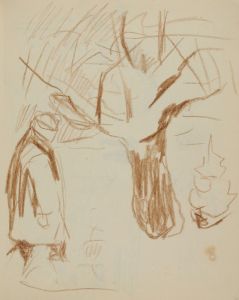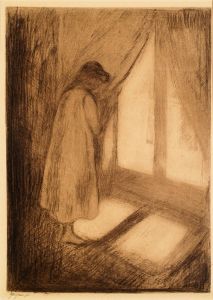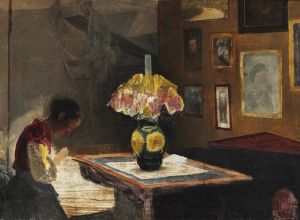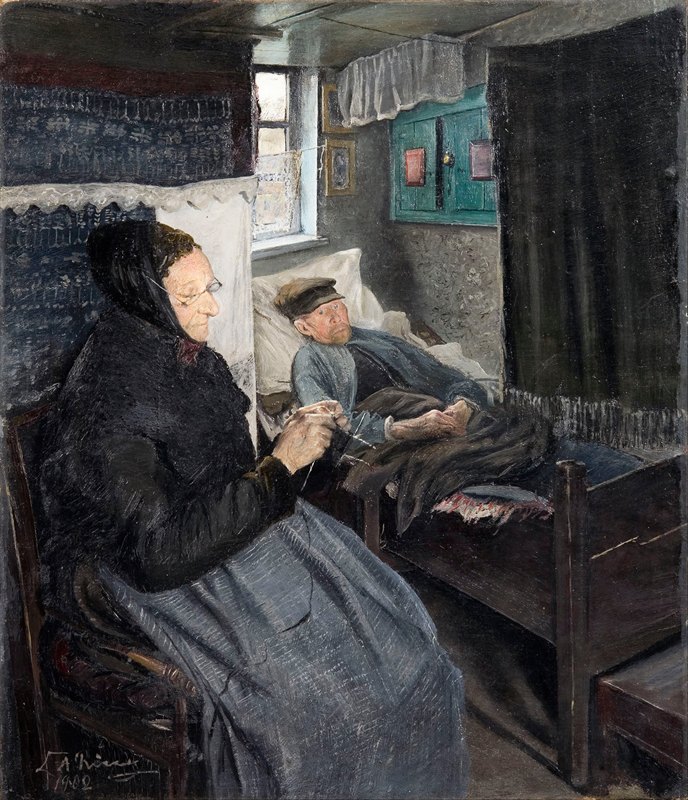
The sick man
A hand-painted replica of Laurits Andersen Ring’s masterpiece The sick man, meticulously crafted by professional artists to capture the true essence of the original. Each piece is created with museum-quality canvas and rare mineral pigments, carefully painted by experienced artists with delicate brushstrokes and rich, layered colors to perfectly recreate the texture of the original artwork. Unlike machine-printed reproductions, this hand-painted version brings the painting to life, infused with the artist’s emotions and skill in every stroke. Whether for personal collection or home decoration, it instantly elevates the artistic atmosphere of any space.
Laurits Andersen Ring, a prominent Danish painter, created "The Sick Man" in 1882. This painting is a significant work in Ring's oeuvre, reflecting his transition from traditional styles to a more modern approach that would later define his career. Ring is often associated with the Symbolist movement and is known for his ability to capture the emotional depth and psychological complexity of his subjects.
"The Sick Man" depicts a poignant scene of a man lying in bed, evidently unwell, with a somber and introspective atmosphere. The painting is characterized by its muted color palette and the meticulous attention to detail, which are hallmarks of Ring's style. The composition is intimate, drawing the viewer into the personal space of the subject, and evokes a sense of empathy and contemplation.
Ring's work often explores themes of existentialism, human suffering, and the passage of time, and "The Sick Man" is no exception. The painting reflects the artist's interest in the human condition and his ability to convey profound emotional states through his art. The setting is simple, yet it is the subtlety of expression and the careful rendering of light and shadow that give the painting its emotional weight.
During the time Ring painted "The Sick Man," he was influenced by the social and cultural changes occurring in Denmark and Europe. The late 19th century was a period of significant transformation, with industrialization and urbanization altering traditional ways of life. Artists like Ring were responding to these changes by focusing on the individual's experience and the inner world, rather than grand historical or mythological themes.
Ring's technique in "The Sick Man" demonstrates his skillful use of realism to convey psychological depth. The textures of the bed linens, the pallor of the man's skin, and the subdued lighting all contribute to the painting's somber mood. This attention to detail not only enhances the realism of the scene but also serves to underscore the gravity of the man's condition.
The painting is housed in the National Gallery of Denmark, where it is part of a larger collection of Ring's works. It is considered an important piece for understanding Ring's development as an artist and his contribution to Danish art. "The Sick Man" exemplifies Ring's ability to blend realism with emotional and symbolic content, making it a significant work in the context of 19th-century European art.
Laurits Andersen Ring's legacy as an artist is marked by his unique ability to capture the subtleties of human emotion and the complexities of modern life. "The Sick Man" remains a testament to his skill and his insightful exploration of themes that continue to resonate with audiences today.







